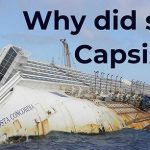Centuries ago when the aboriginal adventurists ventured into the sea in their primitive rafts to experience the thrill of moving across the waters, it didn’t take them much time to understand the hazards bounded with the feat.
Disasters happened, their boats crumbled, capsized, sank, losing lives. Using trial and error as their implements those craftsmen gradually developed expertise. Since the advent of 18th century mathematical and scientific approach has been taken in order to estimate and anticipate the hazards beforehand.
It is necessary to ensure that if any mishaps happen such as fire, flooding, explosion, structural damage, the ship can sustain a substantial level of damage and enough time is there to prevent any immediate catastrophe and steps can be taken to mitigate the consequences and render counter-actions available.
Damage Stability: The Term
The term damage stability deals with the ability of a ship to float in water and regain its upright equilibrium position when some sort of structural damage has occurred. Generally, following an accident, the damage is hull fracture leading to flooding of ship compartments.
If so many compartments are flooded that there is not enough buoyancy available to keep the vessel afloat, the ship may sink. Another critical scenario due to hull breach is ship capsizing due to loss of transverse stability as it can happen very quickly. The disasters of the Herald of free enterprise and Estonia are few such instances.

How do ships get damaged?
Surface ship damages were havoc to the economy of the nation due to their high cost. This made the naval architects study the factors that contribute to shipping damage in the sea. Some are enlisted below
a. Collision
b. Grounding
c. Poor design or structural failure
d. Natural Calamities
After the naval architects studied the reason for ship damage, the tried to quantify the damage and tried to design the ship keeping in mind the survivability of the ship in case of damage. The tried to incorporate the damage stability analysis of a ship in its design phase such that no or fewer failures are experienced at the time of operation. This made the job of the naval architects pretty difficult and damage stability analysis came into the picture. The damage stability analysis included
• Quantification of the behaviour of the ship when damaged in case of a failure or accident.
• Design aspects to prevent or restrict the havoc caused by the failure.
The two approaches to Damage Stability Analysis
To assess the behaviour of a ship after some damage two methods are considered:
• Deterministic damage stability
• Probabilistic damage stability
Deterministic Damage Stability
This is a traditional method of assessment of the stability of a ship when it is flooded. In this process, the ship is divided into several subdivisions along its length with the help of transverse watertight bulkheads. Now the stability of the ship is calculated when one or more compartments get flooded due to a breach of hull.
The changes in draft and stability when a compartment becomes flooded due to damage can be investigated by either of two methods:
• Lost Buoyancy method
• Added weight method
1. Lost Buoyancy method:
The damaged compartment(s) is considered open to the sea and therefore, does not contribute to the buoyancy of the ship. So, the lost buoyancy must be compensated by sinkage of the vessel and the moment due to change in LCB of the vessel is manifested through the heel or trim of the vessel. The assumptions considered in this method are that the flooded compartment does not provide buoyancy anymore and hence, there is no change in displacement or KG of the vessel and no free surface effect is observed.
2. Added Weight method:
This method considers that water ingresses in the damaged compartments up to the new water level and the weight of the ingressed water augments the displacement of the vessel that is compensated by the sinkage of the vessel. Consequently, the KG of the vessel changes due to the weight of ingressed water and Free Surface Effects has to be taken into account, if the compartment is partially filled with water. The weight added shifts the CG of the vessel that might lead to list or trim of the vessel.
Thus the two methods act as a twofold assessment of the damaged condition of a vessel. It is actually a good practice to verify the result of the assessment of the damaged condition of the vessel by the complementary method.
Both methods will give identical answers for final draughts, trim and righting moments, despite different values for GM. However, IMO/SOLAS recommends the use of Lost buoyancy method for all calculations.
Deterministic damage stability- An insight to floodable length concept
As we discussed, in deterministic approach the hull is internally subdivided to increase the factor of safety of the vessel in case of hull damage. Now, this subdivision is not arbitrary. It takes a lot of study and analysis balancing both economic and safety needs of the vessel before the designer fixes the subdivision of the vessel. In this approach, the length of this compartment is to be calculated such that if this compartment is flooded, the ship will sink to a point where margin line is just submerged. This is the floodable length at a point along the length of the ship. The subdivisions accordingly resist flooding in damaged conditions to the safest limits. Floodable Length is an important parameter that is taken into account here. It is defined as the maximum length of the compartment that can be flooded such that the draft of the ship remains below the margin line. Thus, the maximum division of bulkheads is the best solution. But, other factors such as minimum required size of hold, improper cargo stowage, and the number of required outfitting or increased steel weight hinders the possibility to some extent. Thus, optimizing the safe limits of floodable length to the minimum required length of the watertight compartment is done in most cases.
Floodable length Curve:
A ship should not sink if anyone compartment is breached and flooded is the idea behind developing the floodable length curve of the vessel. The floodable length closer to the midship area is larger compared to the ends of the vessel since the flooding of the midship compartments are accompanied with parallel sinkage whereas the flooding of the end compartments are accompanied with sinkage and trim that augments the chances of the waterline touching the margin line of the vessel. Therefore, the floodable length varies along the length of the ship and its variation is obtained by vertically plotting the floodable length along the ship’s length. Also, the floodable length along the length of the ship is a function of the permeabilities of each compartment. More is the permeability of the compartments, more will be the water ingress in case of a hull breach and as a result, lower will be the floodable length at that point along the length of the ship.


